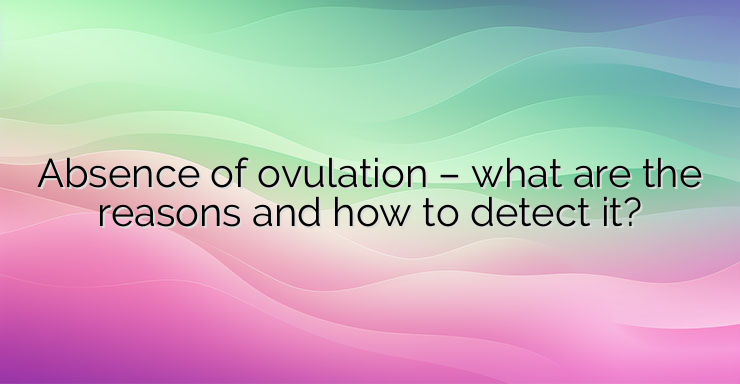In order to understand the reasons for the lack of ovulation, it is first necessary to clarify some key stages of this process. Ovulation is controlled by the hypothalamus, an area of ??the brain that connects the central nervous system and the endocrine system. The hypothalamus sends signals to the pituitary gland – a gland located at the base of the brain – to secrete two hormones: follicle-stimulating hormone – FSH and luteinizing hormone – LH. Follicle-stimulating hormone stimulates the growth of the follicle that contains the egg, and luteinizing hormone is produced when the egg is mature. The egg is then released into the fallopian tube – then ovulation occurs. It usually appears 14 days before the start of menstruation. Once the egg is released, it is ready to be fertilized by a sperm. What does lack of ovulation mean? In case of anovulation – lack of ovulation, this process does not take place. In the case of dysovulation – the reason may be that ovulation occurs but not every cycle, or that the ovary is unable to produce the correct balance of hormones required for the very early stages of embryonic development, even before menstruation slows down. Lack of ovulation can be temporary or permanent, depending on the cause. Irregular or even absent menstruation is often a sign of a lack of ovulation. Women who have a regular menstrual cycle every month usually also ovulate regularly. The best way to determine the presence or absence of ovulation is the temperature curve. It consists in measuring the body temperature in the anus or vagina every morning, preferably always at the same time. If there is a slight increase in body temperature – a few tenths of a degree, compared to the usual temperature, and this increase continues, it means that ovulation occurred the day before. If there is no slight increase in temperature during the cycle, it means that ovulation has not occurred. It is important to clarify that the temperature curve does not allow to determine the time that is suitable for conception, it only shows whether ovulation has occurred or not. Ideally, conception should occur before the temperature rises. If pregnancy does not occur – after one year of regular attempts and a temperature curve showing the absence of ovulation, it is necessary to consult a specialist. References: https://www.doctissimo.fr/grossesse/envie-d-enfant/ovulation/absence-d-ovulation-anovulation-et-grossesse


Leave a Reply